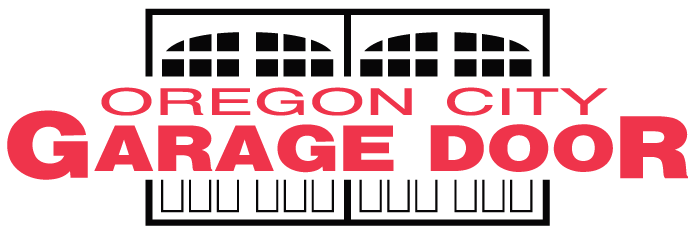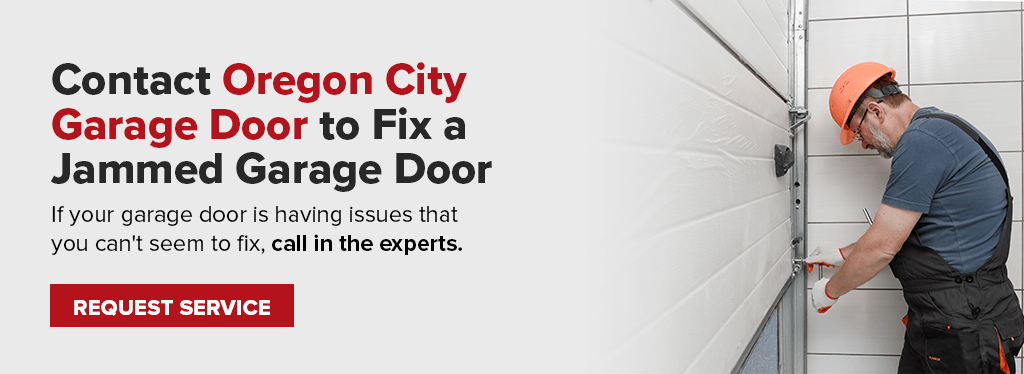How to Build a Pole Barn Garage
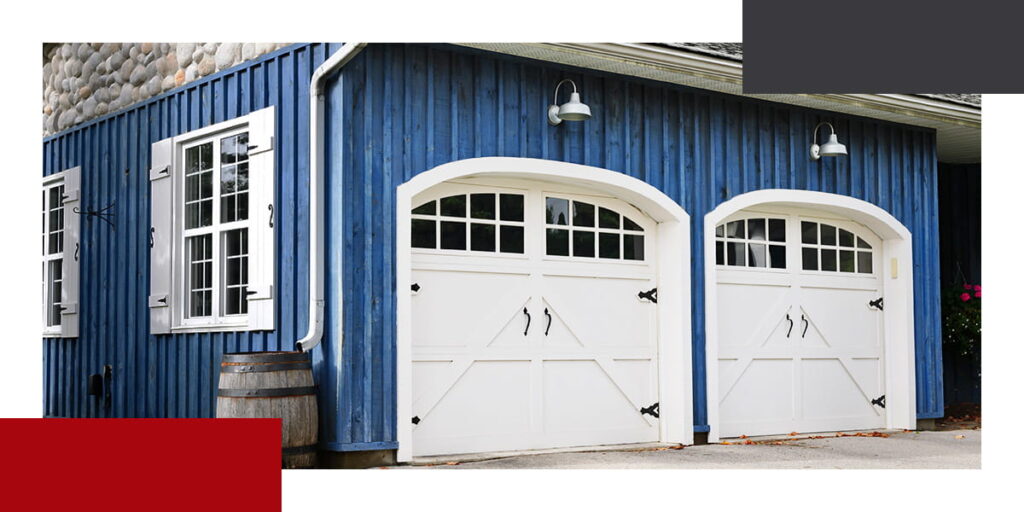
Are you considering installing a garage on your property? You could opt for a traditional stick-built garage, which involves laying a foundation and constructing a wood-framed structure on top of it. You could also choose a pole barn, a type of post-frame build consisting of wood or metal poles and crossbeams.
Pole barn construction offers several benefits. This type of garage typically takes less time and costs less to build — it doesn’t require a lengthy framing process, and there’s no need to lay a concrete foundation and grade the surface. Extensive separation between the posts facilitates larger wall openings, which are ideal for installing a garage door. Finally, pole barns are highly durable. They can withstand strong winds and other forces.
How to Build a Pole Barn Step-by-Step
Follow this process for DIY pole barn construction:
- Build a base. Choose a flat, well-drained surface and add fill to create a raised base area. Crushed rock screenings work well because they’re small, inexpensive and easy to rake.
- Install the posts. Standard pole barn plans show posts at 8-foot intervals, although you can place them up to 12 feet apart if you need more access for machinery or other wide objects. The post holes should be 5 feet deep and rest atop pre-poured concrete footings.
- Put braces and beams in place. Install horizontal beams on top of the poles that span the distance between each pole. Secure the beams by notching each post approximately 12 inches from the top, setting them in the notches and bolting them together. Another method is to place the beams atop the poles and use bolted metal plates to secure the connection.
- Add roof framing. Ready-made trusses will support the roof, eliminating the need for interior support posts.
- Install the roof. Metal roofs tend to work best with pole barn construction. They’re quick to install, and there’s no need for full sheathing on top of the trusses.
Don’t Forget the Pole Barn Garage Door
Oregon City Garage Door is the best choice for your pole barn garage door project. We’ll help you choose the right product for your needs and budget and perform a professional installation that fits your timeline. We also provide warranty coverage for your protection and peace of mind. Contact us to request an estimate today.
How to Fix a Stuck Garage Door
Owning a garage is so convenient, as long as the garage door is running smoothly. You rely on your garage door to go up and down on demand multiple times each day. If your garage door was installed properly, you’re used to it working without any issues. But, perhaps today, it got stuck.
Garage doors rely on a series of interconnected parts to function properly. Their complex design can sometimes malfunction without warning. Regular garage door maintenance can help avoid these issues, but breakdowns can still happen.
A stuck garage door can cause inconveniences in your daily routine. Sometimes there is a simple fix, and other times you may need professional repairs. These tips can help you avoid frustration and identify the root of the problem so you can get your garage back to normal right away.
Causes of Sticking
The first step toward fixing your garage door is to figure out why it got stuck. Garage doors are powered by many different parts, which can malfunction for a variety of reasons.
Here is a list of common problems that cause garage doors to get stuck:
1. Dead Batteries
The first thing you should check if your garage door is stuck is the batteries in your remote. Batteries die all the time, and this is often the problem. If you swap in fresh batteries and it doesn’t help, you can start checking out other likely causes.
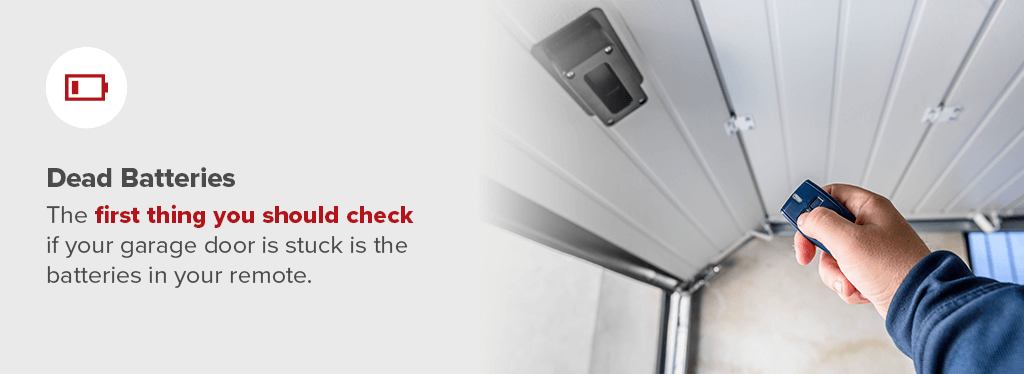
2. Locked by Accident
This may seem obvious, but have you checked the lock? Garage doors can often become locked by mistake by a child or an automatic locking system. If your garage door won’t open, take a second to check the locks before trying other solutions.
3. Cold Weather
Oregon winters are cold and wet, and water can collect and freeze around the springs of your garage door. A buildup of ice can put pressure on your springs, making your garage door latch stuck. Try removing the ice from the springs and see if your door becomes unstuck. Clearing the ice from your springs may be a simple fix unless they have become damaged. Use a heat gun on a low setting or a hair dryer to gently melt the ice away.
If the ice has broken the springs on your garage door, call a repair service right away. Replacing a spring yourself is extremely dangerous and is not recommended.
4. Broken Pulley or Springs
A pulley and spring system lifts your garage door up and down. These mechanisms pull the door along the track to open and close it. If a spring is broken or the pulley is obstructed, the garage door will not be functional. These parts can break even while the door is in motion, causing it to be stuck halfway or fully open.
Springs are not designed to last forever. After a while, they need to be replaced. If you believe this is causing your door to be stuck, call a professional garage door repair service. They can fix the broken spring or pulley system to get your garage door running smoothly.
5. Track Issues
Your garage door’s track is an essential part of the opening and closing mechanism. But it’s also one of the most delicate. Rollers guide your garage door along the track to lift it up and down. If the track is disturbed, your door can easily become stuck.
Common track issues include:
- Blockages: Objects like rocks and leaves or even a rubber ball have been known to weasel their way into garage door tracks. Examine your tracks for any items that could be blocking the rollers from moving. Only try to clean these blockages if your garage door is in the down position to avoid the risk of injury.
- Dislodged rollers: If your garage door opens halfway and stops, your rollers may have jumped off of the track. A professional is needed to fix this problem safely.
- Damage: Regular wear and tear can add up, causing the tracks to become bent and misshapen. They can also be broken by an impact from a car or harsh weather conditions. Call a professional to make sure your garage door is fixed properly.
6. Sensor Malfunction
Sensors are designed to keep your garage door open if they sense an obstruction. Sometimes, sensors register a blockage like dust and other debris as an object, causing the garage door to be stuck open. Try wiping them off and test if that works. If problems persist, consult a professional for help.
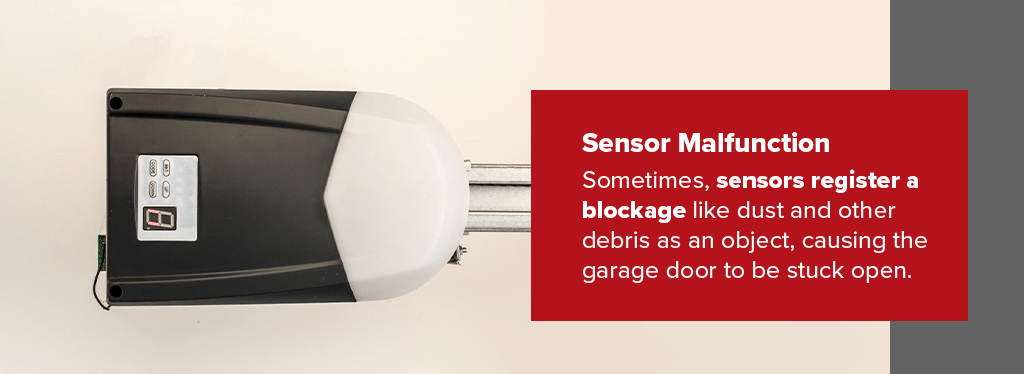
7. Inadequate Lubrication
Proper lubrication is required for your door to function smoothly. If your garage door has been making a lot of noise lately, you may not have enough. Poor lubrication will cause your door to get stuck, but the solution is simple. Apply lubricant to the tracks, hinges, rollers and springs after cleaning the components. Do this when the door is in the down position.
Stuck up, Down or Halfway?
The spot where your garage door is sticking can help you troubleshoot the cause of the problem. You can rule out certain malfunctions depending on where it is jammed.
Stuck Up
Common causes for a garage door that is stuck in the up position include:
- You have malfunctioning garage sensors.
- There’s a broken spring.
- There’s an electrical issue with the garage door opener.
- Remote batteries need to be replaced.
Stuck Down
Common causes for a garage door that is stuck down include:
- There are broken parts, like hinges, cables or rollers.
- The garage door is locked.
- Rollers are out of the tracks.
- Remote batteries need to be replaced.
Stuck Halfway
Common causes for a garage door that is stuck halfway include:
- An obstruction is blocking the rollers on the tracks.
- There’s a jam in the spring and pulley system.
- The pressure on the garage door opener needs an adjustment.
Contact Oregon City Garage Door to Fix a Jammed Garage Door
If your garage door is stuck, you can look at the areas listed above to identify the problem. Check the locks, clean out the tracks, apply lubricant and attempt a few other easy fixes. However, making major repairs to your garage door can be dangerous if you do not have experience. Trust your garage door to the professionals for a quick and easy fix.
At Oregon City Garage Door, our professionals provide high-quality prompt and friendly service. Our experts are available to inspect your residential or commercial garage door and find the right solution to make your garage fully functional again. We also offer garage door maintenance and tune-up services to prevent your garage door from getting stuck again in the future.
If your garage door is having issues that you can’t seem to fix, call in the experts. Schedule a service with Oregon City Garage Door today!
How to Get Rid of Mold in Your Garage
Like any other part of your home, your garage is vulnerable to mold. In fact, garages can be even more susceptible because mold thrives in dark, damp spaces.
Even if you aren’t in your garage much, mold can still pose health risks to you and your family — you may be bringing it into your home on shoes and backpacks without even realizing it. Exposure to mold can lead to symptoms such as skin and throat irritation, coughing and nasal stuffiness.
Preventing and eliminating mold in your garage can prevent lasting damage to your home as well as keep your family safe, happy and healthy.
How Does Mold Get Into the Garage?
Garages are prone to mold because they are relatively dark and damp. Your garage is probably not as insulated as the rest of your home. Additionally, many older garages are made from materials like wood that don’t provide much resistance to moisture.
If your garage is attached to your home and used as an entrance, the risk for mold is high because it is open so much, allowing moisture inside. However, you can find mold in detached garage spaces as well, and you might not be as likely to notice it right away, allowing for continued growth.
How to Eliminate Mold in Garage Spaces
So you’ve checked your garage and found mold. How can you get rid of it?
If the mold is on a non-porous surface like concrete, you can remove it by following these steps:
- Before you get started, be sure to wear protective clothing, especially gloves and a mask.
- Some household agents such as bleach, vinegar, hydrogen peroxide and ammonia can kill mold. Spray one of these agents onto the area.
- Let it sit for an hour or so.
- Scrub the area with hot water and a stiff brush.
Depending on the materials in your garage, you may be able to remove mold from a garage door, wall or floor on your own using these techniques. If the problem persists, however, you may need to consider professional mold removal.
If you find mold on a porous surface like a wood garage door, there’s a good chance that you won’t be able to eliminate it, especially if the mold has been there for a while. You’ll likely have to replace it with a mold-resistant material like polyurethane steel.
How to Prevent Mold in Garage Spaces
Once you’ve gotten rid of mold in your garage, you’ll want to ensure that new mold doesn’t develop. Here are a few ways to prevent mold in your garage:
- Get a dehumidifier. This will cut down on the moisture in your garage. Proper ventilation (like vents and fans) will also help lower humidity.
- Upgrade your storage from cardboard to plastic. Do you have any cardboard boxes of odds and ends lying around in your garage? Switch to a waterproof material for storage. It doesn’t have to be fancy — plastic tubs will work just fine!
- Remove standing water. You might notice pools of water on your garage floor after a heavy rainstorm, or if you wash your car in the garage. If there’s standing water in your garage for any reason, mop it up or use a squeegee to get rid of it.
- Let in some sunlight. Mold thrives in dark spaces. If your garage has windows, make sure they aren’t obstructed so that sunlight can get in. Fresh air is good for your garage as well, so if you can, leave your garage door open for a few hours a week to let in some light.
Following these steps can go along way toward preventing mold in your garage. If the problem persists in spite of your efforts, you might want to consider remodeling your garage with moisture-resistant materials.
Act today to keep your home and family safe from mold. Check out the selection of moisture-resistant doors at Oregon City Garage Door and contact us for installations and repairs in the Portland area.
Tips for Spring Cleaning Your Garage
Spring is the perfect time to declutter, clean and organize your home — including your garage. After all, there is nothing better than starting the year off right with a clean space. Along with removing all the dust and dirt, you can go through your garage, get rid of any items you don’t need and replace any old or broken belongings.
Garage Cleaning Tips for the Overwhelmed 
If it’s been a while since you last cleaned out your garage or you have a lot of items, the thought of tackling such a task can feel overwhelming. While it may feel like there are many challenges ahead, here are a few tips you can try to make the process run more smoothly:
- Come up with a goal so you have something specific you are working toward.
- Break tasks down into a checklist that you need to complete to reach your goal.
- Gather your friends and family and assign tasks to each person.
- Pace yourself and focus on your end goal.
5 Tips on How to Clean Out Your Garage
Ready to start? Here are five tips and tricks for cleaning and organizing your garage this spring:
1. Remove Everything From the Garage
To make the entire cleaning and organization process easier, start by removing everything from your garage. If there’s no rain in the forecast, you can move all your items out to your driveway so you have a blank slate to work with.
2. Dust, Wipe and Sweep
Starting from top to bottom, begin sweeping and dusting away any cobwebs, dust and dirt on the ceiling, walls and shelves. Then, give the floor a quick sweep to get rid of anything that has fallen down.
3. Clean the Floor 
Once your garage is dust-free, you can create a simple DIY cleaning solution of distilled vinegar and water to clean the floors. If there is a lot of grime, you might need to use your hose or a power washer to clean it. Once the floors are sparkling clean, you can also use this solution on your garage door windows.
4. Sort and Organize
As your garage is drying out, you can start sorting and organizing everything you have in the driveway. Create separate piles for the things you want to keep, sell, throw out and give away.
If you don’t have any storage units, shelves or wall organizers, now is a good time to install those. Having a designated place for your things keeps everything organized and prevents your garage from becoming too cluttered in the future.
5. Check Your Garage Door 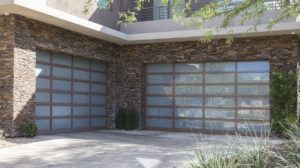
Now is also the perfect time to check your garage door and see if it needs any maintenance. Ensure everything is working as it should and has no loose parts or rust.
Keep Your Garage Operating as It Should With Oregon City Garage Door
When it’s time for your yearly garage door maintenance, Oregon City Garage Door has you covered. Along with our collection of functional and stylish residential garage doors, we also offer maintenance and repair services to keep your garage running as it should throughout the year.
Have any questions about our services or want to schedule an appointment? Fill out our contact form or contact us at 503-632-3070 and we’ll be in touch with you soon.
Turning Your Garage Into a Living Space
If you are looking to add additional square feet of living space to your home, your garage is a great place to start. You’ll be giving up a protected parking and storage area, but you’ll be gaining around 600 square feet of additional space — without paying the high prices associated with a full-scale addition.
What’s Involved in a Garage Conversion Project? 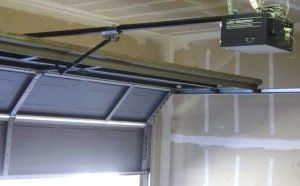
While there are multiple steps involved in remodeling a garage, you can expect the process to last around four to six weeks. You’ll pay approximately half of what you’d spend on a new home addition. The total cost can vary depending on what you install and which features you want. However, you can expect to pay anywhere from around $6,000 to $50,000 to convert a standard two-car garage.
Any time you want to convert your garage into a living space, you’ll have to consider any legal or zoning requirements. That’s because converting your garage into another room might involve doing things like:
- Opening the partition wall between your house and the garage.
- Installing an electrical service upgrade.
- Adding heating and cooling.
- Adding new windows and doors.
How to Remodel a Garage and Make It Livable
To transform your garage into a comfortable space your family and friends can spend time in, you’ll need to complete a few steps to make it livable:
- Add drywall: Finish or install new drywall to create an aesthetically pleasing space.
- Install insulation: Add insulation to help keep the space comfortable year-round. Depending on your needs, you can use spray foam insulation, rockwool or conventional fiberglass roll insulation.
- Add walls: Install non-load-bearing walls to hide any unsightly items like a furnace or water heater.
- Increase floor height: Consider raising the floor height to make it even with the rest of your home.
- Change the flooring: Install a floor covering like tile or laminate flooring to make your floors more attractive.
- Upgrade the door: Insulate or replace your garage door to help it fit in with the new space.
What Types of Rooms Can You Convert a Garage Into?
Once you’ve created a safe, habitable space out of your garage, you can transform it into any type of room. Here are a few room ideas to consider:
- Bedroom or bathroom.
- Family room.
- Living room.
- Playroom.
- Office.
- In-law suite or studio apartment.
- Mancave.
- Art studio or craft room.
- Workspace.
Looking for a New Garage Door to Complete Your Conversion Project?

Here at Oregon City Garage Door, we’ve been providing a full line of stylish and durable garage doors to Portland-area residents for over 25 years. No matter what your needs or favorite styles are, we have collections of wood, aluminum and steel doors that will complement your new garage renovation project.
Along with having garage doors to suit any style of home, we also offer installation, maintenance and repair services. With our one-year warranty on all new garage door installations, you can trust we’ll do what it takes to ensure you are satisfied and protected.
For more information on any of our products or services, call us at 503-632-3070 or fill out our contact form.
